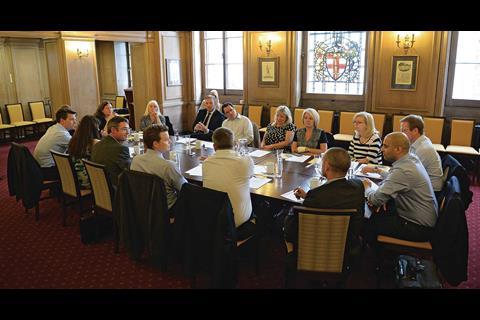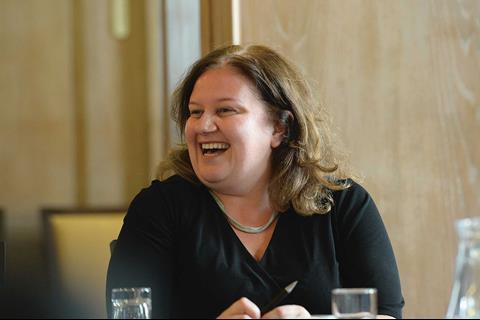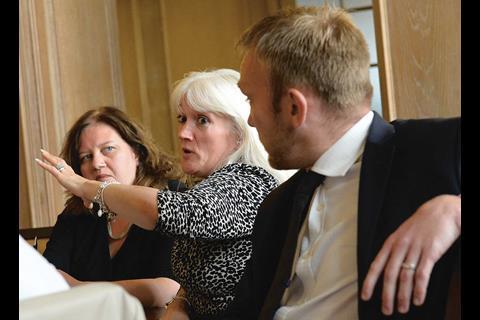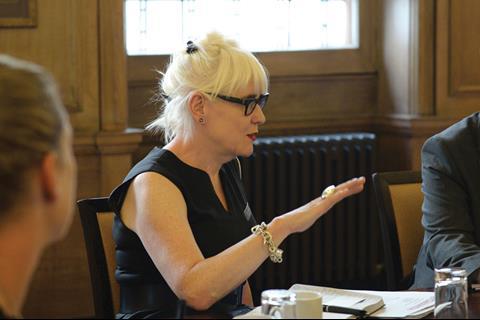Law firms are embracing cutting-edge technology to improve efficiency and provide services that meet client expectations.
Increased competition in the legal market driven by market liberalisation, the global recession and, more recently, corporate clients including law firms’ IT competence as part of their external counsel selection process, has put IT in the spotlight. Technology has helped to shift the competitive environment as it underpins many of the new business models borne out of ‘the new normal’.
Technology is both a threat and an opportunity: the right technology – in terms of practice management and other systems – can help a firm leverage its resources, boost productivity and increase profit margins. But how far can legal IT drive competitive advantage, particularly since cloud computing has levelled the IT playing field?
The Gazette ’s legal IT roundtable brought together a group responsible for the IT strategy of firms of different sizes and structures to discuss IT challenges in a professional services environment: IT as a differentiator and an enabler, to meet client demands and deliver/enhance client service.
Data analysis – in particular big data analytics, which involves applying algorithms to large quantities of data from different sources and repositories to forecast trends and outcomes – is a hot topic in many sectors, particularly retail and financial services, so the final discussion reflects on the application and usefulness of big data in law firms.
Strategy: IT as a differentiator
A firm’s IT strategy must be aligned to its business strategy. As Stuart Walters, CIO at Taylor Wessing observes, all firms seek to reduce cost and increase revenue as well as considering clients’ procurement processes. Jan Durant, IT director at Lewis Silkin, adds that this means prioritising projects that add significant value, for example going paperless or finding more chargeable hours. Graham Sankey, IT director at TLT, observes that strategy also includes risk, regulation and compliance, which have been key factors in TLT’s significant growth and its shift from regional to national service lines.
Brian Inkster, founding partner of Inksters Solicitors, comments that strategy is not confined to growth and financials: ‘It is also about innovation. People want a cheaper, more efficient service, but they also want something different. What are you offering that’s different from your competitors and how does the way you use IT act as a differentiator?’
Durant, Sue Hall at Linklaters and Karen Jacks of Bird & Bird identify sector focus as a differentiator –but do not identify a lot of differentiation on the technology side. Durant cites three IT priorities that are basically operational: resilient systems; making a difference to lawyers and clients – which means ensuring that people can use the tools on their desktops – and information security.
If technology is a differentiator, how visible is this to the client? Are clients asking firms keen questions about technology or is technology a behind-the-scenes enabler, helping firms deliver better service in terms of efficiency, productivity or outcomes?
Jacks confirms that the pitch process often includes questions about value-added technology and information security. ‘Prospective clients regularly ask whether we have an extranet and then they never use it,’ Durant adds.
According to Hall, some Linklaters partners know what the firm has in terms of technology resources and discuss this with clients – and prospective clients – while others are not so well informed. ‘That is a comms and engagement piece, which is one of the hardest challenges,’ she adds.
Given that most firms have access to similar technology, the discussion turned to its usability as a differentiator and what firms are doing to engage lawyers with their IT resources. Nagib Tharani, director of international expansion at Clio, says that most firms have invested in numerous integrated pieces of software with multiple functionality. He asks whether the complexity of law firms’ systems is proving a barrier to lawyers making proper use of the firms’ systems.
Walters believes that IT adoption is all about ‘user interface’. ‘There are three ways to get people to adopt stuff: you tell them they have to; you reward them for it; or you involve them by making the software a pleasure to use,’ he says.
Durant offers an example, explaining that while BlackBerry automatically syncs active directory password changes, the iPhone does not do this, and lawyers who have opted for iPhones under Lewis Silkin’s choose your own device (CYOD) environment have to re-enter their new passwords each time there is a change, but they do not object to this because they want to use that particular smartphone.
David Aird, who recently joined DAC Beachcroft from outside the legal sector, observes that most law firms’ systems are not particularly joined up or integrated.
Tharani asks how important it was for law firms – and lawyers – to have ‘kitchen sink’ products in terms of functionality, which includes dedicated smartphone apps. ‘Is it possible for a system with a multiplicity of features to be easy to use?”
Abby Ewen from BLM comments that although most firms invest in multiple systems and tools, and make them accessible via, for example, smartphone apps, lawyers do not necessarily use them. Jacks agrees that complex functionality can be a barrier to usability, particularly when it comes to mobile access – lawyers don’t tend to require mobile access to every part of the system.
However, Graham Sankey points out that if you asked lawyers whether they needed all the functionality on the systems, some would no doubt argue that everything was necessary.
‘As technologists, we need to take a step back and put ourselves in the shoes of the lawyers,’ Ewen says. ‘Technology should be underpinning what they do in an invisible way. It should not be front and centre, but aligned to what they do. I am in the process of introducing a CYOD environment. My techies say we can have unified communication on an iPhone – but not everyone in the firm wants an iPhone.’
Engaging users with IT and training
‘Training is huge,’ Ewen says. ‘I am staggered by how many people in my firm don’t know about the systems that we have. As one senior partner said, we need to give our lawyers less legal training and more technology training – and we need to start by fixing the basics.’
The partnership culture is a key consideration when it comes to ensuring that lawyers can use the firm’s IT investments. As one attendee notes: ‘Some partners don’t like to admit they don’t know how to use our IT systems so they hide behind secretaries and paralegals.’
As technologists, we need to take a step back and put ourselves in the shoes of the lawyers. Technology should be underpinning what they do in an invisible way. It should not be front and centre, but aligned to what they do
Abby Ewen, BLM
TLT has taken steps to address this. ‘We do one-to-one training with partners, because partners won’t sit in a room with other people – even other partners – and admit that they don’t know how to do something,’ Sankey says.
Being tech savvy is not age related because this is about using specific tools. Durant explains that partners generally work in Word, but firms rarely check whether their partners have had proper Word training. Straightforward functions such as numbered lists, styles and paragraphs create huge losses in productivity.
Nor is it a generational problem because digital natives are social media savvy. ‘Digital natives’ are not necessarily IT literate and most of them have never had basic Word training.
This is, attendees note, not simply about creating a standardised document or even a neat-looking page; it is about addressing the issue of how confused formatting in different versions ends up corrupting documents as they are revised multiple times by different people and different firms.
The new model law firm
Although IT capability is a potential differentiator in formal pitches for many larger law firms, Radiant Law bases its entire business model on the ability to use and exploit technology.
CEO Alex Hamilton established Radiant Law, he says, to change traditional equations. ‘We got rid of the timesheet and all our work is fixed price. We have South African operations and software developers around the world. You could say that we are the skunkworks of the law: we have tried to tie software development closely to the lawyers’ work. We are highly specialised and we have simplified everything, but our lawyers still have to adapt to our way of working.’
IT competence therefore underpins the firm’s operations. ‘Instead of allowing individual partners to create their own ways of working, all our lawyers have to adopt the Radiant way which is about creating and adapting business processes that match the work we do.’
Hamilton believes that time-based billing is at the root of most of the problems around law firm productivity – and IT competency. ‘You get what you measure, and if you measure time, you get time, whereas we are constantly looking to improve our services and how we deliver them.’
‘Inksters uses cloud-based systems to deliver services to clients in remote locations,’ explains founding partner Brian Inkster. ‘Our solicitors operate in remote areas, but all our back-office support is in Glasgow. Clients benefit because they get a lot more than they would get from local high-street competitors.
This is not because we asked clients what they wanted, but because we applied technology to the challenge of delivering legal services to remote parts of Scotland.’
Walters highlights that the discussion around added value quickly turned to operational issues. ‘It’s all about robust systems and training, rather than real value-adding activities around making people more efficient. Is that because of our legacy or because we need to cover all the operational bases to keep our lawyers happy?’
Aird adds that, notwithstanding buzzwords like innovation, winning business generally comes down to pricing.
At the table:
Fiona Fitzgerald, Radcliffes Chambers; Abby Ewen, Berrymans Lace Mawer; Stuart Walters, Taylor Wessing; Eduardo Reyes, Law Society Gazette; Jan Durant, Lewis Silkin; Karen Jacks, Bird & Bird; Sue Hall, Linklaters; Alex von der Heyde, Esterase; Nagib Tharani, Clio; Stuart Whittle, Weightmans; David Aird, DAC Beachcroft; Graham Sankey, TLT Solicitors; Brian Inkster, Inksters; Joanna Goodman, Law Society Gazette; Alex Hamilton, Radiant Law
Inkster encapsulates his approach to efficiency and client service thus: ‘Ultimately clients will see the benefit. You don’t need to give them the detail of the technology or tell them that you’ve got something special that no one else does. You need to make the technology work as efficiently as you can, and the clients will see their work being done more efficiently, and they will remain your clients.’
Cloud applications are increasingly popular among law firms. Aird used a hybrid cloud model in his previous role outside the legal sector. Although he plans to move DAC Beachcroft to a similar hybrid cloud model in order to reap the advantages of agility, cost and scalability, he is currently dealing with numerous legacy systems and servers. Inkster paints a very different picture: ‘We have no servers in our offices and no software on our computers. Everything is cloud-based and in a data centre in Gloucester.’
Larger firms have had clients stipulate that data should be held at the firm’s premises, assuming that it is safer within the firm than held externally. Ewen explains that this can be addressed by having sensible conversations with the right person in the client organisation, rather than agreeing to blanket demands that may not make sense, involving IT security or undertakings to delete data.
Tharani who has long experience working with cloud services takes the view that many firms, particularly outside the US, do not understand what cloud computing is, and associate cloud with hosted services like Salesforce.com and Dropbox. However, cloud computing from a multi-tenanted environment adds a level of scalability and resilience that few can match.
The issue is that many clients have stringent demands regarding where their data resides. ‘Some 30% of our clients require that their data is held in the UK, which makes it difficult to work with the bigger multi-tenanted vendors and UK-based multi-tenanted services tend to be cost prohibited because we already have data room space in our offices,’ Sankey says.
For larger international firms, the position is further complicated by the regulatory regimes in different jurisdictions. Hall explains: ‘We have to go to the cloud because we spend so much time, money and effort keeping our systems up to date.
However, we operate in several jurisdictions where we would be committing a criminal offence if we allowed any outside supplier not directly employed by Linklaters to see a client’s data – even including the client’s name. This means that we have to be very cautious about any sourcing arrangement.”
Replacing legacy systems
Another common challenge related to the cloud that does not affect relatively new businesses such as Inksters and Radiant Law is the cost involved in replacing legacy systems with cloud services. ‘We spend a lot of time upgrading and integrating our systems, but we have to balance the benefits of agility and scalability with the cost of ripping everything out and replacing it and, additionally, the subscription cost every year,’ Jacks explains. Durant saw no problem in investing in some stand-alone cloud services.
Here the issue is cultural – it was generally agreed that lawyers are used to the IT department ensuring that everything works together smoothly. The downside, as Jacks notes, is that Word and Outlook take forever to load because there are so many macros and plug-ins.
The cultural challenges around IT resources – and strategic choices – are magnified at barristers’ chambers, as Fiona Fitzgerald, chief executive at Radcliffe Chambers explains: ‘Barristers are self-employed, so everyone uses different hardware and software. We also need Chinese walls between individuals.’
Considering the legal sector’s shift to cloud computing, particularly for certain tools and applications, are firms doing enough to ensure that they do not fall foul of data protection regulation and professional rules of conduct?
Weightmans’ IT director and partner Stuart Whittle, who started his legal career as a professional indemnity lawyer, believes that the old system was better – because it covered every possible permutation. Now it is more about guesswork – ‘they are basically saying, “don’t be evil”, without telling us what they mean by evil.’
‘If we thought about our fiduciary and legal, and contractual obligations, and we did everything that we thought we ought to be doing, the various conflicting regulations would make it impossible to run the business,’ he adds. ‘It is a minefield and the best any firm can do is show that they have applied their minds to it and reached a sensible judgement.’
Outcomes-focused regulation raised similar concerns. ‘The purpose of the SRA’s change to outcomes-focused regulation was to avoid situations created by the fact that the market – and how we do our work – is changing so fast,’ Fitzgerald comments. ‘Regulation was not keeping up with changes in the sector, so it is now trying to cover everything.’
Would law firms prefer to do things their own way, while giving some thought to compliance, rather than being constrained by a rigid regulatory structure? Alex von der Heyde of Esterase has worked with firms who have had relevant dealings with the SRA. ‘If you give the SRA sufficient information to reassure them that you take risk management seriously, they are unlikely to intervene unless something goes wrong and a client throws the book at you.’
There was general agreement that firms are more likely to fall foul of the Information Commissioner when it comes to issues around data protection and retention. It was generally agreed that the ICO has not considered the particular needs and position of law firms in respect of deleting client data that resides on various systems and devices. However, most law firms’ confidentiality policies exceed their regulatory requirements, even under the Data Protection Act.
Another consideration, particularly for mid-market firms, is the amount of time and effort that needs to be devoted to the numerous regulatory changes. Although the IT director is generally on the firm’s risk committee, most regulatory challenges are not directly related to IT. Inkster highlights the need to check with vendors that all systems and products are secure and compliant.
Balancing the advantages of cloud computing with the firm’s regulatory obligations is a matter of sensible risk management and due diligence. Durant flags up that most firms use Mimecast’s cloud-based email management system, which retains their data in its UK datacentres.
As the economy recovers, client relationship management (CRM) is back on law firms’ agendas, but how well does it sit with their structure and culture? Although everyone agrees that it is useful to have client information at their fingertips, there are cultural challenges around getting lawyers to share information about their own clients.
Taylor Wessing’s Walters classifies CRM as a marketing tool rather than a business development tool. ‘Marketing is shouting, while BD is shaking hands. Our CRM tools collect client information, share it around the firm and use it to create lists for mailshots etc. It is not like Salesforce.com which works out who your prospects are and how you get to the point of sale.’
When it comes to CRM, there is a division between the larger firms and providers and the mid-markets and smaller firms. Whereas the larger vendors are only just developing CRM platforms which integrate across the firm’s systems, practice management systems (PMS) aimed at the mid-markets are based on the CRM database.
‘Clio offers two entry points into the system,’ explains Tharani. ‘The first relates to prospective clients, whereby client details are entered into the system. The second relates to matter inception and conflict checking. In both cases, CRM is the entry point into the PMS.’ Although Clio integrates with other cloud services, it was acknowledged that integration between different cloud-based systems was a potential issue for conflict checking.
Big Data – size counts
Big data analytics is not to be confused with business intelligence software which analyses management information (MI) to support decision making. The discussion started with the familiar question around how big data has to be before it is considered to be big data in terms of analytics and what big data analytics – which are commonly applied to customer behaviour in retail operations – can bring to law firms.
Big data analytics is also about creating new ways of presenting information and this is particularly valuable in relation to volume work. Ewen explains that BLM’s volume work requires 500 fields of MI [management information] data for each case.
‘If you run a business intelligence tool over that data, it is possible to replay to your clients two years’ worth of data, which helps them spot trends and predict business outcomes.’ Aird offers a different example from his previous role where operational data was used to make business decisions around property portfolio management.
At Linklaters, Hall is applying big data techniques to derive insights from client and matter information, and create semantic maps that show who worked on a matter, which law school they attended and so on. Big data is about identifying the right questions.
At Taylor Wessing, Walters uses a different internal big data repository. ‘We have 13 million emails in Mimecast that document every decision, every meeting and every document that has been sent to or received from our clients. The question is how to analyse that information. The idea is to get a feeling of what is going on within and around organisations, not attempting to make specific forecasts.’
Tharani at Clio uses anonymised user data to produce metrics around how intuitive and efficient the product is and where training is required – by analysing how quickly clients and matters are being entered into the system. Other applications of big data include working with publicly available data and using social media data for sentiment analysis to advise clients in particular sectors.
The discussion revealed that legal IT is looking at cutting-edge developments to enhance efficiency and service delivery. But the main challenges are related to the regulatory regime, which seems to be lagging badly behind developments in technology and in the legal sector and the partnership culture, which limits firms’ ability to ‘leverage’ the systems and data they already have.
- This roundtable was kindly sponsored by Clio










































4 Readers' comments